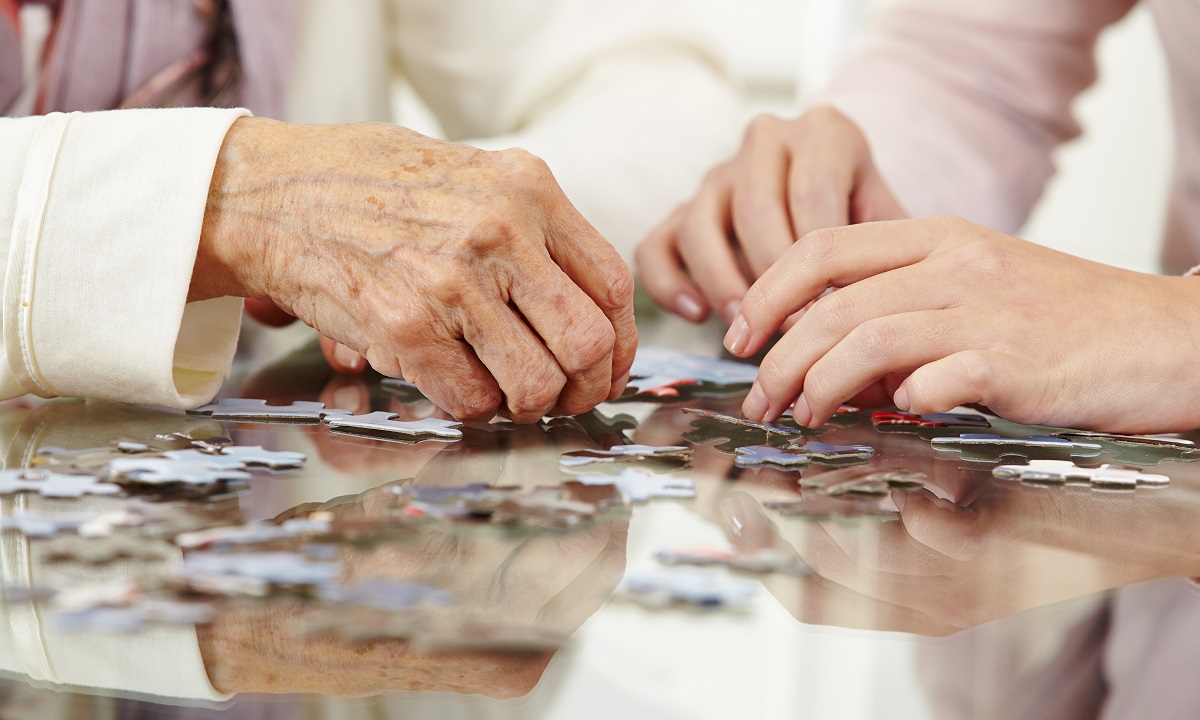Flying can be challenging if you have dementia, but it shouldn’t be impossible. In this 3 part series Unforgettable investigates how to make the experience easier for everyone.
This week we reveal how to cope at the airport and onboard the flight
Coping with check-in and security
The key to coping with this potentially difficult part of the journey is to ensure that the people you encounter understand issues around dementia. The good news is that many of the larger airports are already taking steps to train staff so they’re dementia-friendly.
However, it’s also worth being prepared to explain why the person you’re travelling with might not respond in the way they should. For example, if check-in staff ask if they’ve packed their bags themselves, it’s quite possible they’ll say no (because you did it). In cases like this, you may need to step forward and explain the situation.
Similarly, when going through security, having to separate fluids into bags, remove shoes, give up a handbag to be x-rayed and be patted down by a complete stranger could be confusing and more than a little traumatic for someone with dementia. Try to stand next to each other during the queuing process, and stand behind them during the security checks so if they’re held back, you won’t then be separated.
Look for the quiet area
Once you’re through security, it might be worth seeking out the quiet area of the airport. If you’re willing to pay, you may be able to get access to private airport lounges, which will be less busy. Also be mindful that it might take you longer than usual to get to the departure gate, particularly if a loved one isn’t that mobile, so you shouldn’t go too far from the gate.
Getting lost
It can be so easy. One minute you’re testing perfumes in the Duty-Free shop, the next minute, your loved one with dementia has disappeared. It can be really traumatic to realise they’ve walked off so be mindful that this could happen, and prepare for it by giving them an identity label or badge so someone can contact you. Include their name, your name, a mobile number and their flight details. Put these details in a lanyard (Gatwick airport can provide one for you) or add to a badge or sticker.
Boarding the plane
Once it’s time to get on the plane, make the most of front-of-the-queue boarding – it’s usually offered to those with children or who are disabled, but could also be requested for a loved one with dementia.
During the flight
What can flight attendants help with?
Cabin crew will be happy to help with general requests, but are not to be expected to carry out jobs relating to caring, such as helping to feed someone or supporting them while they use the toilet. They may be able to help calm or distract someone with dementia if they’re becoming agitated.
Sources of distress
Take-off and landing could cause a certain amount of worry for someone with dementia, particularly as they want to get up and walk around and this isn’t possible once the seatbelt signs comes on. Pressurised cabins can cause ear pain, which may be distressing if they don’t really understand why it’s happening. Sucking on a boiled sweet or distracting the person with music or watching films downloaded onto an iPad could help.
Airline food
If the person with dementia struggles to chew or swallow, trying to eat aeroplane food could prove tricky. For short haul flights, it’s probably worth ensuring you have your own food or you eat in the airport before you board. Be sure to provide plenty of fluids during the flight, as being on a plane can be very dehydrating. Remember, if a person with dementia becomes dehydrated, it can increase the risk of urinary tract infections (which can cause delirium) and lead to low energy.
Wearing a seatbelt
Everyone on a plane needs to wear a seatbelt for take-off, landing and for any moments of turbulence. This may prove tricky if the person with dementia struggles to grasp where they are and wants to get up. If this is the case, distraction is often the best tactic, so make sure you have something that will get them chatting or focusing on.
Remember, if the person with dementia has been asleep and suddenly wakes up, they may be disorientated and panic that they’re on a plane (because they don’t remember getting on it earlier), so try to be aware of this if they go to sleep, and be ready to calm and distract them.
Using aeroplane toilets
The toilets on planes are compact to say the least, so if a loved one with dementia struggles to go on their own or needs help changing a pad, it may be a bit of a squeeze for you both to fit in. Make sure you have everything you need to hand before going into the cubicle.
Some airlines, usually operating on long haul routes, are equipped with a wheelchair accessible toilet. However, smaller planes may have only partially accessible toilets.
SHARE
Explore more




